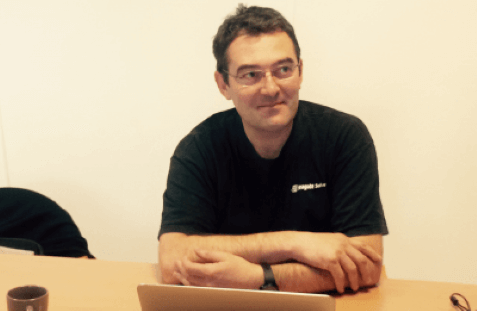5 questions to our CTO

Making things simpler makes us better
According to François Pouilloux, recently named Chief Technology Officer (CTO) at IT-Development, agile development methods are now essential, he explains why.
How would you define agile methods?
Minimum complexity for maximum efficiency! The key idea of this approach is to simplify procedures in areas such as planning, task evaluation, and priority scheduling. For this reason, incremental deliveries provide a great deal of flexibility and offer customers and management greater overall visibility. It makes it easier for us to handle new demands from our customers and take on new projects.
What internal impact has this had so far?
An agile approach develops true team spirit, both between management and developers, but also between our company and our customers. It strengthens communication, particularly between the parent company and our subsidiaries, and it also encourages greater dialogue when dealing with both business requirements and technical constraints. All roles are clearly defined, making it easier to work independently and each person is accountable to another.
What does this mean for customers?
By adopting this method, we can focus closely on meeting our customers’ requirements. How? By working hand in hand with them throughout the project… When we deliver intermediate versions, it reassures customers. They can see that the project is moving along almost in real-time and they can also tell where adjustments need to be made.
Is it more expensive?
No, it’s quite the opposite… The purpose of an agile method is to obtain the best possible results in terms of the production capacity, budget and timeframes that were fixed from the outset.
We focus on what is really useful and leave out the rest.
How is it organized?
At IT-Development, we use the Scrum method, which is a clear, structured technique that is perfectly suitable for teams working remotely. The method involves three main stakeholders: the Product Owner, or Customer Representative, who defines the business functions, priorities, and validation criteria; the Scrum Master, who is the team’s backbone and facilitator, ensuring that the process is properly applied and that maximum value is obtained; and finally, the Development Team. The Product Owner translates the customer’s needs into a list of development requirements detailed in the “Product Backlog”. He establishes an order of priority and adjusts the requirements by focusing only on the short-term objectives. The team plans a release version for three months later, divided into iterations (or “sprints”) at two-week intervals. Regular, clearly defined meetings provide opportunities to discuss planning, assess the work carried out, and make any necessary improvements.
Brief biography
François Pouilloux joined IT-Development in November 2013 as Chief Technology Officer (CTO), in charge of optimizing the organization of its production and management of its development team. With an engineering background, he has 20 years of experience in advanced software design and deployment. He was co-founder and Director of R&D at IXXO, a company specializing in the development of professional web-mining solutions.